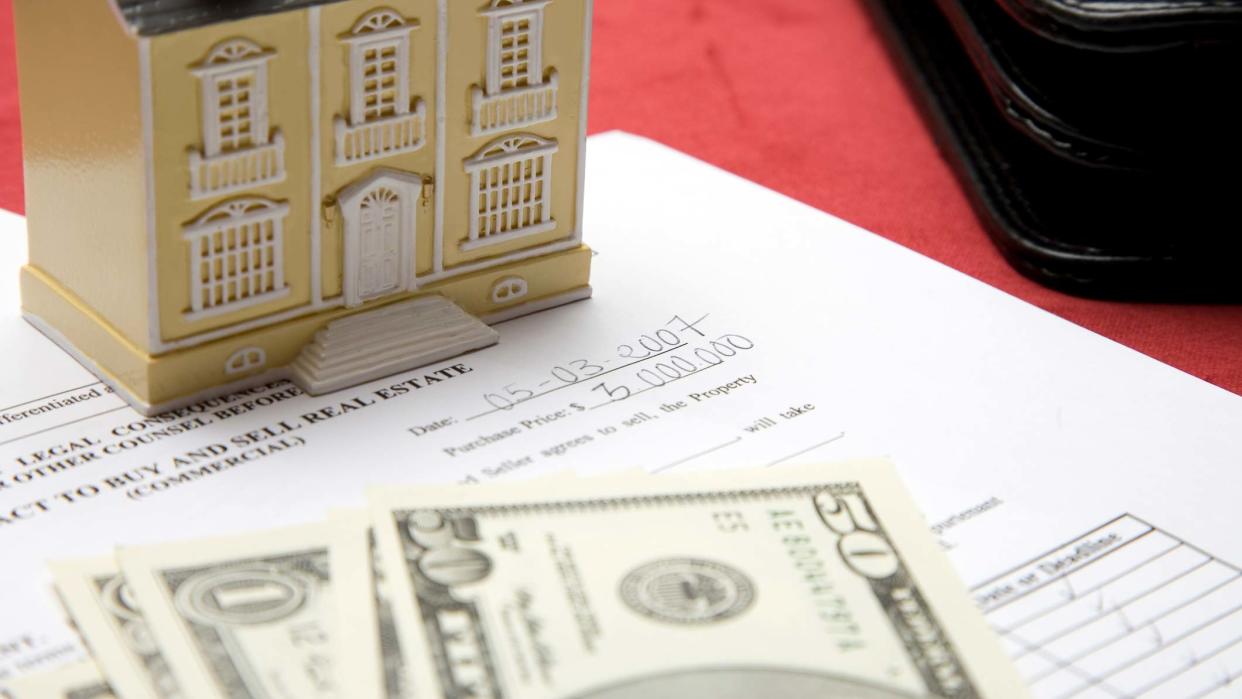What Is a Bridge Loan? A Way to Buy a New Home Before You Sell the Old One
Pinopic/Getty Images
Home loans come in all shapes and sizes to suit the needs of home buyers, and one type that’s definitely worth knowing if you’re trying to buy and sell a home at the same time is a bridge loan. So what is a bridge loan? As the name suggests, it’s a “bridge” that allows you to purchase new property by using the home you currently own as collateral.
Also called a “wrap” or “gap financing,” bridge loans are a lifeline for home owners who are eager to purchase new digs before they’ve sold the home they’re currently in. In such scenarios, unless you’ve got wads of cash, it can be hard to qualify for a loan on that new home while you are still saddled with the mortgage on your first—for many people, that means stretching their finances awfully thin.
While some lenders may be reluctant to grant you a new loan for that second home, they also know that the odds are good that you’ll sell your first home soon enough—and then be flush. So, a bridge loan helps span that gap.
How bridge loans work
Typically, for a bridge loan, you can finance up to 80% of the combined value of both homes. So, if you’re selling a home for $200,000 and buying another one for $300,000, you can borrow $400,000, max. As for the rest (in this case, $100,000), you’ll need that handy either in home equity, savings for a down payment, or some combination of the two. Once your home sells, you pay off the bridge loan and then apply for a new mortgage to finance just your new home.
Bridge loans typically take a shorter time to process than conventional loans (a couple of weeks versus a few months) and are meant to last only a short time (often three months to a year). However, since lenders can’t make much money in interest in such a short time, they typically charge higher rates and fees than they would on a standard home loan. In the current market, bridge loan interest rates can range from 6% to 16%, says Jordan Roth, vice president of GuardHill Financial Corp. in New York, NY.
With interest rates like that, the idea is to pay the bridge loan off as quickly as possible, as soon as you sell your previous home (that said, some lenders have a prepayment penalty, and others don’t, so do make sure to read the fine print).
Bridge loans also come with substantial origination fees—consider it the price you pay for the convenience and short term of the debt.
Pros and cons of bridge loans
The advantage of a bridge loan is that you can make an offer on a new home without a financing contingency, which means that you’ll only buy the home if you can secure a mortgage. Odds are, the personal selling the home you hope to buy doesn’t like financing contingencies, since that would mean that your offer is not a sure thing. A bridge loan solves this problem by guaranteeing the cash needed to close the deal.
Still, bridge loans are rare—requiring an excellent credit score and a low debt-to-income ratio—and do come with substantial risks. Even if you’re pretty sure you’ll sell your home quickly and can pay off this high-interest loan, the real estate market is never a sure thing, and there’s always a possibility that your existing home will take far longer to sell than you imagine … or, God forbid, never sell at all. Then, you’re stuck paying high rates and, if you can’t pay up once the loan comes to term, you could end up losing your home to foreclosure. Granted, most lenders are willing to extend the deadline on a bridge loan, but not forever.
Is a bridge loan right for you?
Whether you should get a bridge loan or not “depends on the market you’re in,” says Steve Goldman, a real estate partner with Kurzman Eisenberg, Corbin & Lever LLP in White Plains, NY. As a general rule of thumb, it’s a good gamble if your home is situated in a hot seller’s market, where you are reasonably assured that it will sell in a short time. “If you’re in a seller’s market, it’s generally fine to buy a new house, then sell your old one,” says Goldman.
However, if you’re in a buyer’s market, where your home might sit on the market for months or years, it’s much wiser to sell your house and rent something for a short time until you find another home you love. Yes, that means you’ll have to move twice—once into your rental, then again, once you buy a home—but that hassle will pale in comparison to the stress you’ll face when the clock is ticking on a bridge loan. So make sure you’re a good candidate before you go out on this limb.
The post What Is a Bridge Loan? A Way to Buy a New Home Before You Sell the Old One appeared first on Real Estate News & Advice | realtor.com®.



